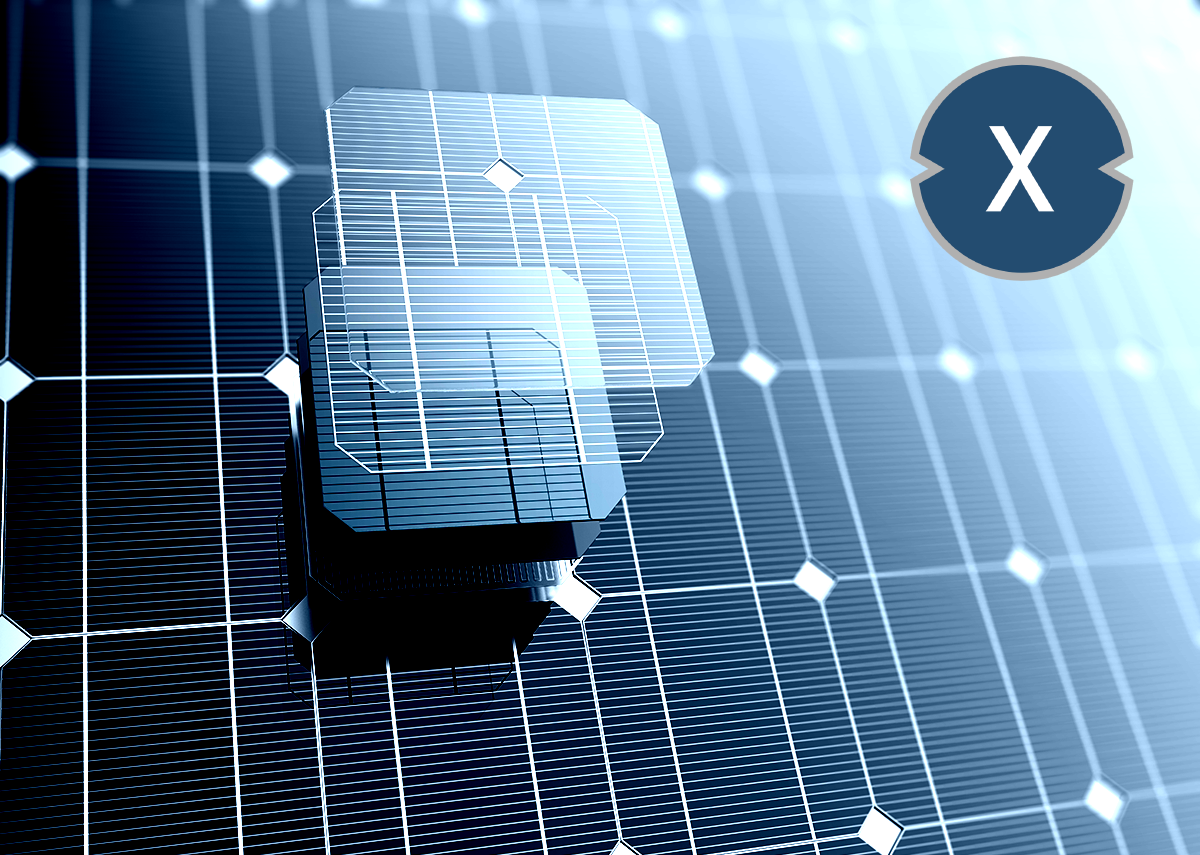
PERC vs. TOPCon solar cell technology in comparison – Image: Xpert.Digital / Iaremenko Sergii|Shutterstock.com
N and P type solar cells
Although the first solar cell developed in the USA in 1954 was one of the N type, the P-Type cell prevailed in the following years. The reason for this was that the modules were mainly used in space travel in the early days, where they had turned out to be more resistant. It was only in recent years that the manufacturers of the solar cells be a rethink, which is due to the larger performance of the N-Type cells. The longer lifespan of these cells is responsible for this, because in contrast to the P-Type, they are not threatened by the “boron oxygen defect”. With increasing operational time, this leads to damage to efficiency. In addition, solar cells from the N-type are less susceptible to metallic contamination of silicon.
In PV technology, even the smallest discrepancies in chemical composition are responsible for large differences in efficiency and economic distribution. This can be seen, for example, when comparing P-type and N-type solar cells. Both differ in terms of their cell structure, with P-type solar cells based on being built on a positively charged silicon base. In contrast, type N solar cells are designed the other way around, because the negatively doped side serves as the base of the solar cell.
However, N-type solar cells are currently more expensive to produce, due to the decades-long focus on P-type cells. Their production led to economies of scale in the value chain, which first have to be built up in N-type production. In addition, additional steps are required in the production of N-type solar modules, which further increases costs. However, due to their higher efficiency, the share of N-type is continuously increasing and it will only be a matter of time before it replaces P-type as the dominant solar cell technology.
With PERC for even more performance
A comparable rivalry between two cell types can be seen when comparing the solar cell technologies PERC (Passivated Emitter and Rear Cell) and TOPCon (Tunnel Oxide Passivated Contact), which have recently caused a stir.
PERC modules increase the efficiency of PV modules because they convert the incident light better into energy. They do this by reflecting the part of the light that reaches the back of the cell back into the cell. This is made possible by a layer applied to the back of the module, the so-called back passivation. The increased efficiency of PERC cells compared to conventional modules is 1%, which in turn helps to reduce production costs per kWp gained.
In order to achieve the greatest possible efficiency, mono wafers are mainly used in PERC cells. The type of solar cell has undergone massive further development in recent years. The increased efficiency has led to them almost completely replacing conventional Al BSF cells in the area of professional PV systems. PERC cells are anything but new, as their principle was first mentioned in 1983 by the Australian University of New South Wales. However, only steadily improved production processes meant that the value of the technology could be fully exploited for mass production.
However, PERC technology is not without its problems. This makes them more sensitive to light-induced degradation than conventional cells. This LID effect causes the solar cells to lose power after their first contact with light. The risk of potential-induced degradation is also higher. The PID defect can have far-reaching consequences as it can significantly reduce the performance of entire PV systems. Investors should therefore pay particular attention to the fact that PERC cells have been certified for PID resistance in accordance with IEC TS 62804.
Is TOPCon the future?
A rising star in solar cells is the TOPCon technology developed at Fraunhofer ISE in Freiburg. These cells can be both monofacial and bifacial and, in contrast to PERC, rely primarily on N-type wafers. They have a higher efficiency potential compared to PERC. Last year, the Chinese manufacturer Jinko Solar demonstrated how high this can be when it presented a monocrystalline, bifacial N-type TOPCon solar module with an efficiency of up to 23.53%. The TOPCon module presented by Longi Solar in 2021 achieved even higher performance. With a P-type TOPCon cell, this achieved an efficiency of 25.19%, setting a new efficiency world record for this technology. Given the rapid progress, it will only be a matter of time before this record is beaten. The intensive research on the modules should ensure that there is still no end in sight to the development.
PERC or TOPCon? A preliminary conclusion
Although the performance of TOPCon solar cells is hard to beat, PERC technology still dominates the market. This is likely to be the case for a while due to the increasing efficiency of the cells and at the same time falling production costs.
However, TOPCon cells are on the rise due to their extremely high efficiency. The high production costs still speak against this type of PV. However, as mass production begins, significant economies of scale are to be expected here too, which would ensure that TOPCon modules in Germany develop into serious competition for PERC technology. Researchers at Fraunhofer-ISE also confirm this. However, according to them, in addition to a reduction in manufacturing costs, an increase in production output to the level of PERC cells is necessary to underpin the economic viability of the TOPCon modules.
According to the scientists' findings, the TOPCon technology generates 13.5 to 18.6% higher total solar cell costs and 3.6 to 5.5% higher total module costs compared to PERC for ground-mounted PV systems with 5 megawatt output. Nevertheless, the researchers at Fraunhofer ISE stated that a 0.4 to 0.55% higher cell efficiency of TOPCon solar cells compared to bifacial p-PERC makes cost-efficient large-scale production possible.
Glass-glass / double-glass solar modules
Regardless of whether N-type or P-type solar cells are used, there is a way to massively increase the efficiency of the solar modules. This is bifacial technology. In contrast to the monofacial solar cell, which only generates PV electricity by illuminating the top, the bifacial solar cell is designed so that it can generate electricity from the top and bottom. The increase in the use of light achieved in this way significantly increases the efficiency of the module.
Of course, the efficiency on the bottom is not as great as on the top, which is oriented toward sunlight. Nevertheless, the efficiency can increase by more than 19% due to the radiation on the underside, depending on the location, distance from the ground and external conditions. This means that the capacity of the entire system can be increased by between 10 and 30. For example, the performance of a module that previously delivered 290 Wp increases to 320 to 360 Wp.
When installing bifacial systems, care must be taken to ensure that they are installed at a sufficient distance from the surface underneath to allow for additional radiation. The minimum distance should be at least 40 centimeters for weakly to medium reflective surfaces such as a tiled roof or grass. However, for highly reflective surfaces (e.g. snow), the distance to the ground should be greater than 1.5 meters.
Suitable for:
📣 Solar modules and photovoltaic solutions (roofs, open spaces such as solar carport systems) for industry, retail and municipalities
Everything from a single source, specially designed for solar solutions for large parking areas. You refinance or counterfinance into the future with your own electricity generation.
🎯 For solar engineers, plumbers, electricians and roofers
Advice and planning including a non-binding cost estimate. We bring you together with strong photovoltaic partners.
👨🏻 👩🏻 👴🏻 👵🏻 For private households
We are positioned across regions in German-speaking countries. We have reliable partners who advise you and implement your wishes.
- Plan solar or solar systems on warehouses, commercial halls and industrial halls
- Industrial plant: Plan a solar open-air system or open-space system
- Plan photovoltaic systems with solar solutions for freight forwarding and contract logistics
- B2B photovoltaic systems and solar solutions & advice
The right solar modules for your solar system: Xpert.Solar for planning and advice in the area of photovoltaic carports, photovoltaic systems on roofs and solar systems in general. We also support you in finding the right and suitable photovoltaic solar modules!
I would be happy to serve as your personal advisor.
You can contact me by filling out the contact form below or simply call me on +49 89 89 674 804 .
I'm looking forward to our joint project.
Xpert.Digital – Konrad Wolfenstein
Xpert.Digital is a hub for industry with a focus on digitalization, mechanical engineering, logistics/intralogistics and photovoltaics.
With our 360° business development solution, we support well-known companies from new business to after sales.
Market intelligence, smarketing, marketing automation, content development, PR, mail campaigns, personalized social media and lead nurturing are part of our digital tools.
You can find out more at: www.xpert.digital – www.xpert.solar – www.xpert.plus

